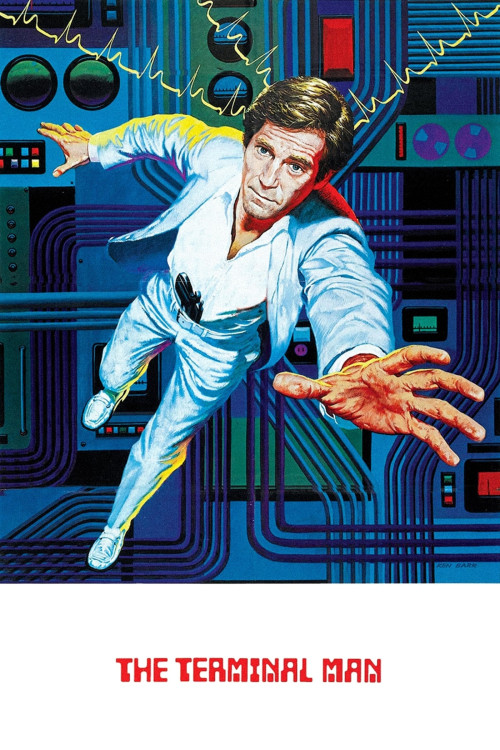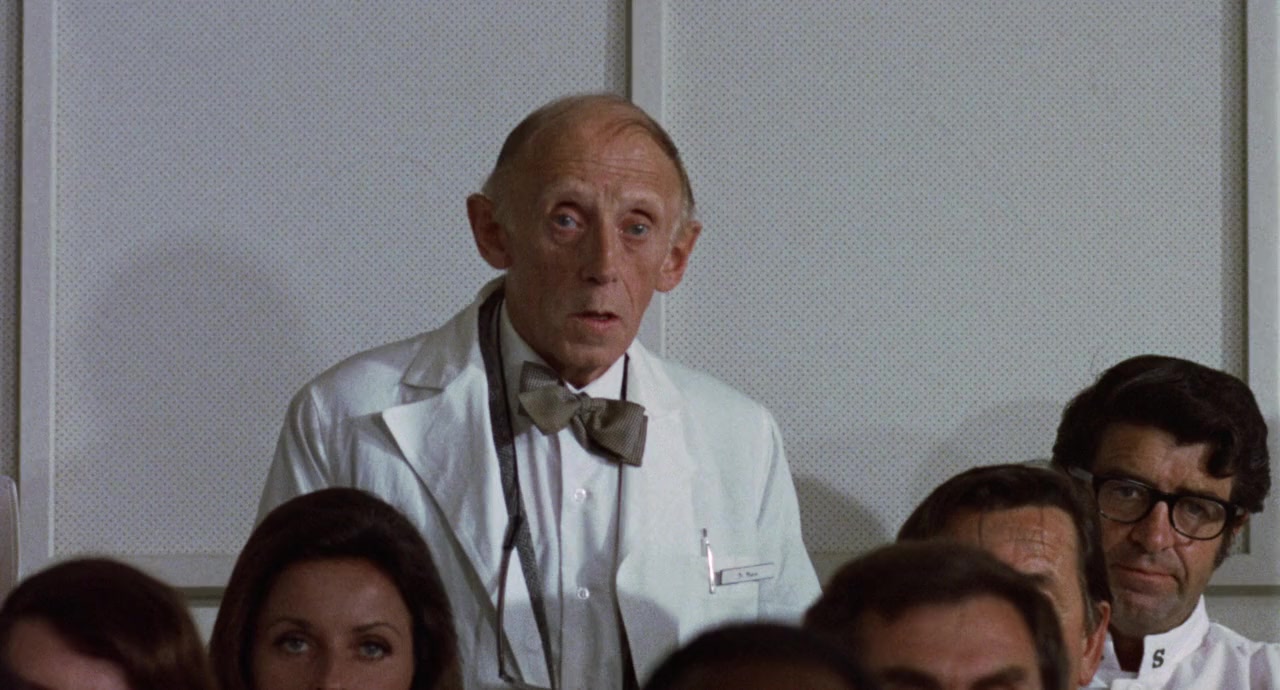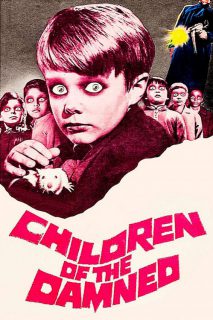
- Year: 1974
- Released: 19 Jun 1974
- Country: United States
- Adwords: N/A
- IMDb: https://www.imdb.com/title/tt0072267/
- Rotten Tomatoes: https://www.rottentomatoes.com/m/the_terminal_man
- Metacritics:
- Available in: 720p, 1080p,
- Language: English
- MPA Rating: PG
- Genre: Horror, Sci-Fi, Thriller
- Runtime: 107 min
- Writer: Michael Crichton, Mike Hodges
- Director: Mike Hodges
- Cast: George Segal, Joan Hackett, Richard Dysart
- Keywords: mind control,
 | 5.6/10 |
 | 41/100 |
The Terminal Man Photos



The Terminal Man Torrents Download
| 720p | bluray | 959.15 MB | magnet:?xt=urn:btih:E28D9EC6F4F80FBE754C9AFF2B1F7CDDF0774C77 | |
| 1080p | bluray | 1.74 GB | magnet:?xt=urn:btih:BD0F5F66663D7FF67B802899A18061E9225BC02C |
The Terminal Man Subtitles Download
| English | subtitle The.Terminal.Man.1974.DVDRip.x264-HANDJOB |
The Terminal Man Movie Reviews
Haywire & Empty Thriller.
Based on the Michael Crichton novel, this adaptation(directed by “Get Carter” Mike Hodges) tells the story of computer programmer Harry Benson, who, in an attempt to cure his brain seizures, agrees to an experiment where he has micro-computers implanted in his brain, in order to correct the faulty brain chemistry. Things don’t go as planned when his new mind starts to get pleasure from the violent impulses he now feels, and so escapes from the hospital, starting a desperate manhunt to prevent him from murdering anyone, and of course to cover-up the scientific failure.
George Segal is believable as Harry, and the rest of the cast is fine, and though Mike Hodges tries, this film is simply too dreary and downbeat to succeed, and by the end, there doesn’t seem to have been any discernible point to it all.
It manages to make a modern Frankenstein story dull…
… and I am not saying slow, which is different from dull. “Babbette’s Feast” is confined in cast and setting and although I guess you could call it slow, it is not at all dull. George Segal plays Harry Benson, a man with a form of epilepsy in which he becomes violent during his seizures and then awakens remembering nothing. He also is paranoid about machines controlling humans ten years before “The Terminator” was released.
His wife leaves him, and it looks like his outbursts will have him traveling through the criminal justice system which can do nothing for this situation or maybe he will wind up shot dead by some would be victim.
So some scientists think that Benson could be a beneficiary of an experimental procedure in which a small computer is implanted in his brain and his epilepsy is controlled by impulses the computer transmits. Post operation, things seem to be a success, but Dr. Janet Ross (Joan Hackett) discovers that Benson’s brain is becoming addicted to the impulses, and in time – and she actually can calculate the time – he will have more frequent and severe violent outbursts.
But before she can do any kind of medical intervention, Benson leaves. Apparently he has prearranged an escape with some woman he barely knows, sporting a blond wig so you can’t tell he just had surgery.
So the last half of the film is just Benson having those predicted seizures and becoming horrifically violent during each one. It doesn’t have the pathos or irony of the Frankenstein monster’s trek through the German countryside. Segal just begins to shake, his eyes roll up in his head, and he does violence to whomever and with whatever is at hand. That’s it. That’s essentially all that the last half is.
George Segal never really got the credit he deserved for some of the really good roles he had in the 70s. This is not one of those good roles, and I really don’t see how he or anybody else but the writer could have saved a film that is really only half there. I’d give the pre-escape part of the film a 7 or 8. I’d give the last half a three. This is where I come up with my 5/10 rating.
Overlooked and interesting 70’s science fiction effort.
“The Terminal Man” is written for the screen, produced, and directed by Mike Hodges (“Get Carter”, “Flash Gordon”, “Croupier”), based upon the Michael Crichton novel, and tells an intriguing story, the likes of which Crichton always excelled at, that combined science and thrills.
The likable George Segal stars as Harry Benson, a computer scientist who, since a car accident, has suffered from blackouts & seizures that made him dangerously violent. Now a team of surgeons is performing ground breaking surgery on him: attaching electrodes to 40 of his brain terminals that will hopefully counteract his violent impulses. However, as the viewer certainly suspects will happen, this doesn’t work, and his brain ends up craving the shocks / stimuli that it receives, and Harry loses control once again.
I can certainly understand the problems that some people may have with this production, as it’s really not the typical thriller at all. It’s slow, and it’s quiet; there’s not even that much musical accompaniment on the soundtrack. It does exhibit a fairly cold, clinical approach, and the emphasis on the story’s exposition will inevitably bore people more conditioned to non- stop action in what they watch. Even after Harry has made the expected escape from the hospital, he doesn’t spend that much time running amok, and certainly does not kill very many people.
But this movie *is* noticeably intelligent and thoughtful and does offer rewards for patient viewers. It has one striking murder set piece that’s rather artfully done; it takes place atop a water bed, and the sprays of water and the way the blood spreads definitely are what make the scene. And, like other movies of this kind, there is a certain wariness (voiced by Harry) on the part of mankind regarding the computer age and what it could mean for us all.
Another wonderful element to “The Terminal Man” is its incredible cast of both stars and rock solid character actors. Segal is effectively low key in the lead, and is nicely supported by Joan Hackett, Jill Clayburgh (in a small but welcome appearance), Richard Dysart, Donald Moffat, Matt Clark, Michael C. Gwynne, William Hansen, and Norman Burton. (It’s particularly fun to see Dysart and Moffat sharing scenes eight years before they did John Carpenters’ “The Thing” together.) And playing smaller roles are the likes of James B. Sikking, Steve Kanaly, Jack Colvin, Ian Wolfe, Lee de Broux, Victor Argo, and Nicholas Worth.
This is all reasonably engaging stuff, leading up to an ending that, while somewhat conventional, is staged in a very unique way. All in all, “The Terminal Man” is a good movie that does deserve to be discovered or rediscovered.
Seven out of 10.



